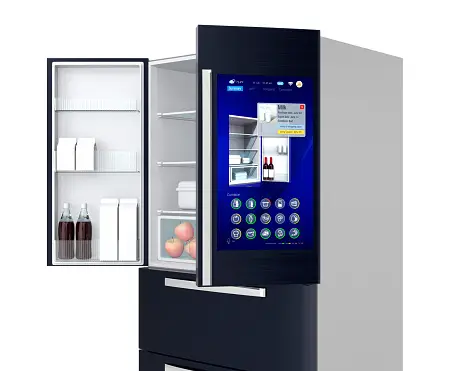
As technology continues to advance, smart home appliances are becoming increasingly popular, and smart refrigerators are at the forefront of this innovation. In this article, we will guide you through the process of installing a smart refrigerator in 2023. With a few simple steps, you can transform your kitchen into an efficient, connected, and modern space.
Understanding Smart Refrigerators
Smart refrigerators are equipped with cutting-edge technology that allows them to connect to the internet, offering a wide range of features and benefits. These refrigerators come with touchscreens, cameras, and sensors that enhance food management, energy efficiency, and home automation integration.
Choosing the Right Smart Refrigerator
Before diving into the installation process, it’s essential to select the right smart refrigerator for your needs. Consider factors like size, features, energy efficiency ratings, and compatibility with your existing smart home ecosystem.
Preparing for Installation
Measuring the Space
Start by measuring the space where you plan to install the smart refrigerator. Ensure that there is enough clearance for the refrigerator’s doors to open fully and that it fits comfortably in the designated area.
Ensuring Proper Electrical Connection
Check the electrical requirements of the smart refrigerator and ensure that the power outlet is compatible. If necessary, hire a professional electrician to make any required adjustments.
Preparing the Required Tools
Gather all the necessary tools for the installation process, such as a screwdriver, level, and smartphone.
Read More: 10 Ideas for Engaging Local Businesses In 2023
Step-by-Step Installation Process
Unpack and Inspect
Carefully unpack the smart refrigerator and inspect it for any shipping damages. Report any issues to the manufacturer before proceeding with the installation.
Leveling the Refrigerator
Use a level to ensure that the refrigerator is perfectly level on all sides. This is crucial for proper functioning and to prevent any door alignment issues.
Connect to Power Source
Plug the refrigerator into the compatible power outlet. Avoid using extension cords or power strips as they may interfere with the appliance’s performance.
Connect to Wi-Fi Network
Follow the manufacturer’s instructions to connect the refrigerator to your home Wi-Fi network. This will enable you to access the full range of smart features.
Download and Set Up the App
Download the dedicated app for your smart refrigerator on your smartphone. Set up the app by following the on-screen instructions.
Configure Settings
Configure the settings on the app according to your preferences. This may include setting temperature zones, adjusting humidity levels, and customizing storage options.
Organize the Interior
Organize the refrigerator’s interior efficiently to make the most of its storage capabilities. Follow the manufacturer’s recommendations for food placement.
Test the Refrigerator
Run a few tests to ensure that all the smart features are functioning correctly. Test the cameras, touchscreen, and connectivity with the app.
Troubleshooting Tips
Even with careful installation, issues may arise. Here are some common troubleshooting tips for smart refrigerators:
Refrigerator Not Connecting to Wi-Fi
Check your Wi-Fi network’s strength and proximity to the refrigerator. Ensure that the refrigerator is within range of your router.
App Connectivity Issues
If the app is not functioning correctly, check for updates and reinstall it if necessary. Also, ensure that your smartphone’s operating system is up-to-date.
Temperature Fluctuations
If you notice temperature fluctuations, verify that the refrigerator’s doors are closing securely. Additionally, avoid frequently opening the doors, as this affects the internal temperature.
Unusual Noises
Unusual noises may indicate loose components. Double-check all screws and fittings to eliminate any rattling sounds.
Maintenance and Care
To ensure the longevity and optimal performance of your smart refrigerator, follow these maintenance and care tips:
Regular Cleaning
Clean the interior and exterior of the refrigerator regularly. Pay attention to the touchscreen and cameras to maintain their functionality.
Software Updates
Keep the refrigerator’s software up-to-date by installing any available updates. These updates often include performance improvements and new features.
Replacing Water Filters
Replace the water filters as recommended by the manufacturer. This ensures that the water dispensed by the refrigerator remains clean and fresh.
Smart Refrigerator Features and Benefits
Food Management
Smart refrigerators offer advanced food management features, including inventory tracking, expiration date notifications, and recipe suggestions based on the items you have.
Energy Efficiency
These appliances are designed with energy efficiency in mind, helping you reduce energy consumption and save on utility bills.
Home Automation Integration
Integrate your smart refrigerator with other smart home devices for seamless automation. For example, you can synchronize it with your smart oven to adjust cooking times automatically.
Voice Control
Many smart refrigerators support voice assistants, allowing you to control various functions using voice commands.
Smart Refrigerator Security and Privacy
As with any connected device, it’s essential to safeguard your smart refrigerator from potential security breaches. Here are some tips to protect your data:
Tips for Protecting Your Data
Use strong and unique passwords for your smart refrigerator’s app and Wi-Fi network. Enable two-factor authentication for an added layer of security.
Manufacturer’s Privacy Policies
Review the manufacturer’s privacy policies to understand how your data will be collected, stored, and used. Opt-out of data collection if you are uncomfortable with it.
Smart Refrigerators and the Future
As technology evolves, smart refrigerators will continue to become more sophisticated, offering enhanced features and seamless integration with other smart devices.
Conclusion
Installing a smart refrigerator in 2023 is a rewarding experience that brings convenience and efficiency to your kitchen. By following the outlined steps and taking proper care of your smart appliance, you can enjoy its benefits for years to come.











